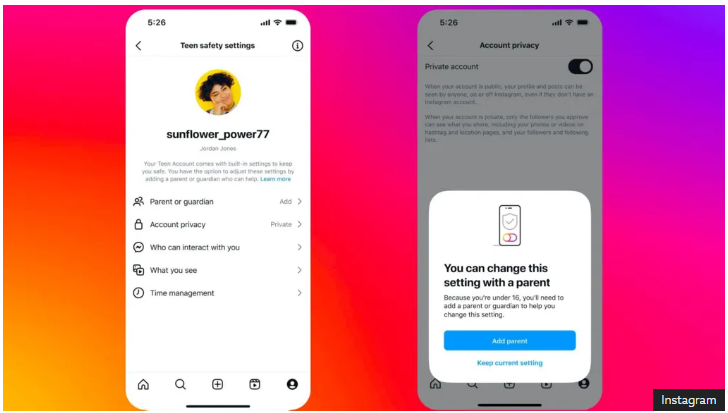Instagram Introduces New Safety Features for Teens
Instagram’s Latest Efforts to Protect Teens and Support Parents
Instagram is rolling out new features aimed at enhancing safety for teens and offering more control to parents. These updates will be available in the UK, US, Canada, and Australia starting Tuesday and will create “teen accounts” for users under 18. These accounts will have enhanced privacy settings, such as automatically blocking non-followers and requiring approval for any new followers.
You might be interested in: Americans Increasingly Rely on TikTok for News
For younger teens, especially those between 13 and 15, account settings will be even more restrictive. Changes to these settings can only be made with a parent or guardian’s approval. These changes come in response to growing concerns that social media platforms aren’t doing enough to protect children from harmful content.
Instagram’s New Approach to Teen Safety
The changes are a step forward, according to the UK children’s charity NSPCC, which praised Instagram’s move but emphasized that it must be backed up by solid action. Rani Govender, an NSPCC policy manager, noted that while these adjustments are a good start, platforms like Instagram need to actively work on keeping harmful content off their site.
Meta, Instagram’s parent company, said these changes are part of a “new experience for teens,” with the goal of giving parents peace of mind. The company added that this update will make it easier for parents to keep an eye on their children’s online activity without invading their privacy too much.
A Parent’s Role in Instagram’s New System
Teens using Instagram will now have more restrictions on what they can see and who can follow them. For instance, their accounts will automatically be private, meaning only approved followers can view their content. They’ll also have to accept new followers manually. Notifications will be muted during the night, and a stricter filter will be applied to the content they can see.
Parents who manage their teen’s account will have access to some of their activity, like who they’re messaging and what types of content they’re interacting with, although they won’t see specific details. Meta acknowledges that many parents don’t fully use the tools provided for them, something Sir Nick Clegg from Meta has highlighted as an area that needs improvement.
How Instagram Identifies Teens
Instagram relies heavily on users providing accurate information about their age. However, they’re introducing new methods to identify teens who might be using adult accounts. Starting next year in the US, Instagram will use AI to find minors who are using adult profiles and guide them toward teen accounts.
This change is part of a broader global effort to make social media safer for younger users. In the UK, the Online Safety Act will require platforms like Instagram to put stronger protections in place, with hefty fines for those that don’t comply.
Ongoing Concerns
While Instagram’s changes are significant, many experts, like Matt Navarra, believe it’s all about enforcement. Teens have always found ways to bypass restrictions, and these changes might be no different. It’s crucial to see how well these new features are implemented and maintained.
The NSPCC has also pointed out that while these are positive steps, platforms need to ensure that harmful content, such as child abuse material and posts promoting self-harm, never makes it onto the platform in the first place. This will be a key part of the UK’s Online Safety Act, set to fully take effect by 2025.
What Does This Mean for Parents and Teens?
These updates give parents a stronger role in managing their teen’s online presence, but they don’t have full control over the content their children might see through algorithms. Social media platforms are constantly evolving, and more needs to be done to improve digital well-being for kids.
Paolo Pescatore, a social media expert, says these changes are a crucial step toward protecting children from fake news and inappropriate content. However, there is still a lot of work to be done to give parents better tools to manage their children’s time on social media.



